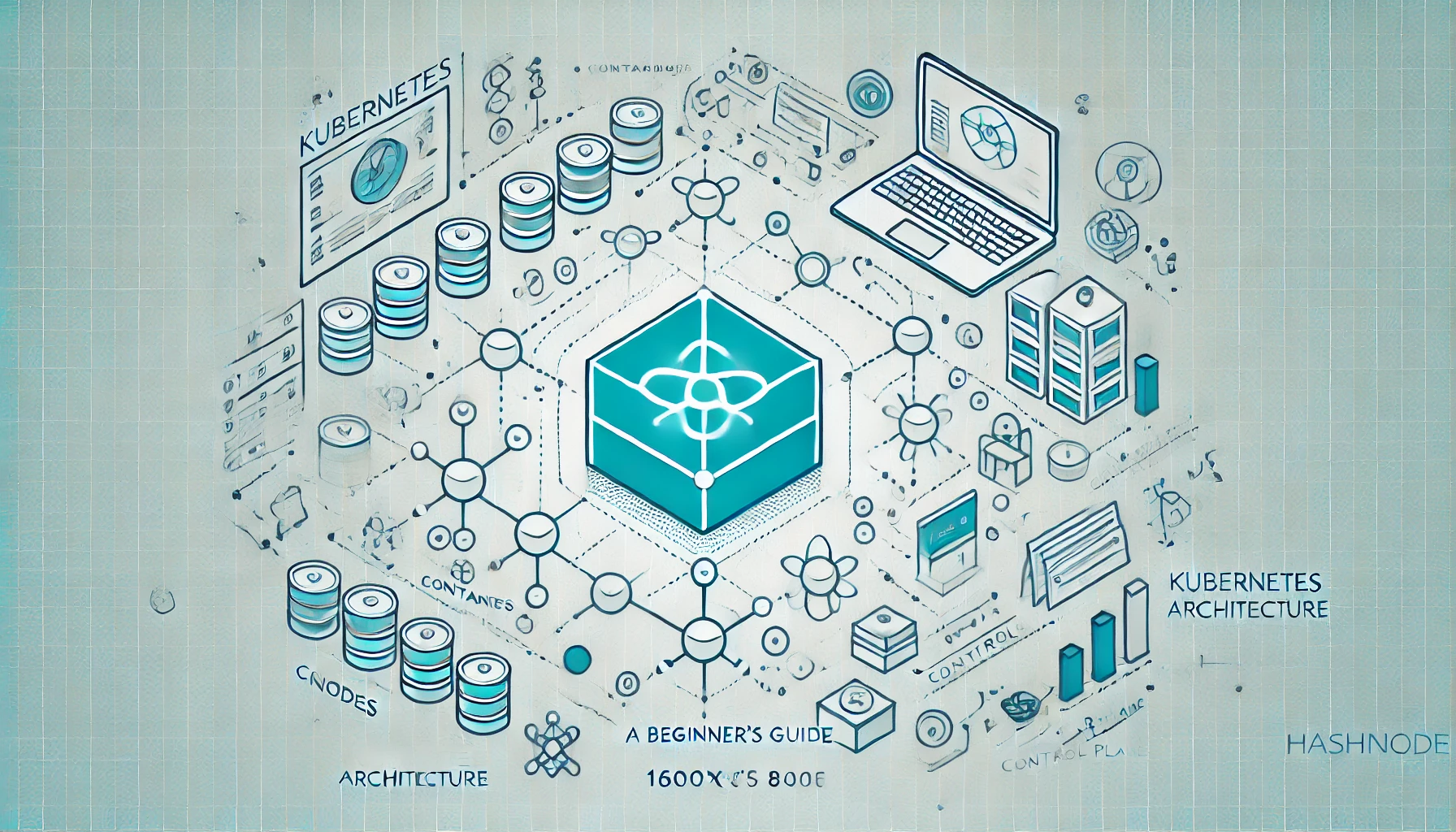🚀 Day 30 Task: Kubernetes Architecture
 Dhruv Moradiya
Dhruv Moradiya
Hey there, tech explorers! 👋 Today, we’re diving into the heart of Kubernetes (or “K8s”) and understanding what makes it the go-to for managing containerized applications. Whether you’re in DevOps or just curious about the tech buzz, this post will break down the essentials of Kubernetes architecture in an easy-to-digest, handwritten style! 📝
🧑💻 Kubernetes Overview
With more companies adopting containers for their apps, Kubernetes has become the rockstar of container management software. 🌟 Originally developed by Google and open-sourced in 2014, Kubernetes is based on 15 years of Google’s experience in running containerized workloads. And get this—it was inspired by Google’s internal system called Borg! 🤯
Kubernetes is now a core part of DevOps, helping teams easily deploy, manage, and scale containerized applications. Think of it as the conductor of an orchestra, ensuring each container (app component) plays in harmony. 🎶
🔍 Tasks and Key Concepts
Let's dig into today’s tasks step-by-step. We'll cover some foundational concepts and explain them like we’re chatting over coffee ☕️.
1. What is Kubernetes? And Why "K8s"?
In simple terms, Kubernetes is a platform that automates managing, scaling, and deploying containerized applications. Instead of juggling each container manually, Kubernetes takes over, making sure every app component gets the resources it needs to run smoothly.
💡 Why do we call it "K8s"?
It’s actually a shorthand! "K8s" is just K-u-b-e-r-n-e-t-e-s with eight letters swapped for "8" in the middle. It’s a cool nickname that tech folks like to use. 😉
2. What Are the Benefits of Using Kubernetes (K8s)?
Why is everyone so excited about Kubernetes? Here’s a quick list of benefits:
Scalability: Easily scale your apps up or down based on demand. 📈
High Availability: Kubernetes keeps your applications running smoothly, even if some containers or nodes go down. 🌐
Resource Optimization: It efficiently uses hardware, helping you get the most out of your resources. 💡
Automation: Kubernetes automates the deployment and management of applications, reducing manual work. 🤖
3. Kubernetes Architecture 🏛️
To really understand Kubernetes, let’s look at its architecture. Kubernetes has two main components:
Control Plane: Think of this as the “brain” of Kubernetes. It manages the overall state of your cluster, making high-level decisions about what should run where. 📍
Nodes and Worker Nodes: These are like the “muscles” that actually run your applications, following the Control Plane’s instructions.
📺 Pro Tip: Check out this video for a visual guide to the architecture. Visuals make it so much easier to grasp! 🎥
4. What is the Control Plane?
The Control Plane is essentially the “manager” of the entire Kubernetes system. It consists of multiple components (like the API server and scheduler) that decide the "what" and "where" of running applications. Its main job is to monitor, manage, and maintain the desired state of the cluster. 🌐
5. kubectl vs. kubelet: What’s the Difference?
You may hear these terms often, so let’s break them down:
kubectl: This is the command-line tool you use to interact with Kubernetes. Imagine it as a remote control 📲, allowing you to communicate with the Kubernetes cluster.
kubelet: This is a small program that runs on each node in the cluster. It listens to the Control Plane and makes sure that the containers are running as they should. It’s like a worker that follows the manager’s instructions. 🛠️
6. Role of the API Server
The API Server is a core component of the Control Plane and acts as the main entry point to the Kubernetes system. Whenever you (or kubectl) need to interact with Kubernetes, you’re actually communicating with the API Server. It’s like a receptionist who takes requests and directs them to the right place within the cluster. 📞
🎉 Wrapping Up
And there you have it—Kubernetes in a nutshell! Hopefully, this gave you a clearer picture of Kubernetes architecture and some of the essential components that keep it running like a well-oiled machine. 🚀
If you're feeling inspired, go ahead and try using kubectl or dive deeper into a Kubernetes demo. There’s so much more to explore, and every step brings you closer to mastering Kubernetes! 👩💻👨💻
Subscribe to my newsletter
Read articles from Dhruv Moradiya directly inside your inbox. Subscribe to the newsletter, and don't miss out.
Written by
